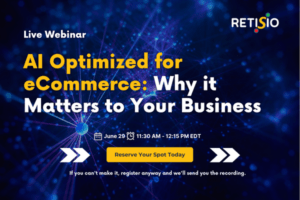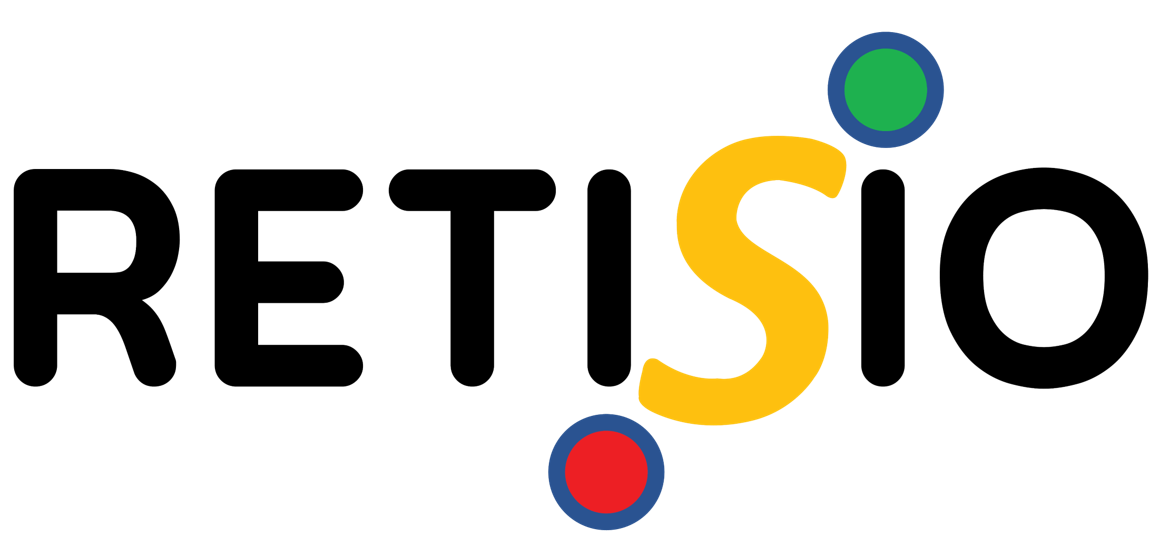RETISIO: Well good day and welcome to the Unlock Digital Commerce Podcast. This is the show where we explore the latest trends in technology in the fast moving world of digital commerce.
In this interview style podcast, we ask the important questions of expert digital commerce practitioners and retail leaders to help you gain traction and sell more online.
In our ongoing quest to bring you the finest insights from across the e-commerce industry, today we’re diving deep into a field that lies at the heart of any successful e-commerce venture, and that is DevOps.
Joining us today is an esteemed guest whose work has been instrumental in the world of DevOps, Savinder Puri.
With an incredible wealth of knowledge and software development operations, Savinder has been leading teams in innovative projects in this sector for years.
Savinder is also an accomplished DevOps speaker, writer, and strategic advisor. His goal is to help enterprises solve business problems based on technology solutions.
Powered by cultural enablement, a global ambassador with DevOps Institute and the Continuous Delivery Foundation, Savinder has been recognized as one of the 10 most dynamic leaders to watch.
Welcome, Savinder. We really appreciate you taking your time and being here. Thank you. Thank you, Brett. Sure.
We also have, as always on our podcast, Tony Moores lending his expert insight and opinions on all things related to digital commerce.
Tony is currently the chief technology officer at RETISIO and has deep experience in leading retailer retailers and brands in digital commerce, tech implementations that enable them to operate online more efficiently, reduce risk, and grow their businesses.
Hey Tony. Thanks Brett. Thanks for being here, as always.
Tony Moores: Let’s thanks, Savinder. Good to talk to you again. I’m excited to talk to you about this.
Savinder Puri: Thank you, Tony. It’s always a pleasure to talk to you.
RETISIO: Yeah. We’ll let’s get the conversation started today and I’ll just go ahead and throw the ball over into the Savinder’s court with the first question.
Savinder, there’s some distinct roles and responsibilities of DevOps, SecOps and service ops within an IT landscape, particularly in e-commerce. Could you elaborate on those roles for us a little bit and maybe. For the layman in the audience, give us a high level if possible Sure.
Savinder Puri: Overview of that. Sure. Sure. Brett. So let’s talk about the three roles and responsibilities in general, and then I’ll, get into the realm of e-commerce. Okay. So you mentioned about DevOps, SecOps. And service ops. So let me give you a slight understanding of those from my perspective. So the way I like to define DevOps is very simply continuous everything.
Now, what does that mean? It means you continuously build the source that you are working on. You continuously deploy it to the non-production environments. You continuously test it, then you continuously deploy it on production. You continuously monitor it, and then you continuously. Produce the fixes that go into it and the subsequent releases.
So everything in the software development life cycle, you do it in a continuous fashion. That’s DevOps 1 0 1. When you add a security layer on everything that you’re doing, that becomes DevSecOps or the SecOps, and that means not just keeping security at a silo towards the end of the release and doing some checks before that.
It means including security at every step in the S D L C. And then service ops is probably the next version of what we used to call ITSM. Things like incident management, problem management, service desk service levels, and things like that. Gotcha. Yeah. Now let’s see how these relate in the realm of e-commerce.
Let me give an e-commerce twist to all of this. For example, in e-commerce, we know that content delivery is supreme because any e-commerce website will have a ton of things like product images, description, maybe customer reviews. And it could be spread across the globe depending on the shape and the size of business you’re talking about.
Now, delivering and enabling this content seamlessly and in a period of micro milliseconds is enabled by DevOps. Also scalability during peak periods, maybe a holiday season, maybe a black Friday, when the traffic suddenly peaks up, stays at the peak for a couple of days a week, and then goes down.
So enabling those scalability is through DevOps.Now, if I talk about the security angle, It’s obviously the compliance to security requirements, A P C I, dss, A G D P R, things like that. It’s also about fraud prevention detection because you have customer data, you have credit card information. On the service op side, it’s probably about order processing, inventory management.
A very huge element of customer support, probably enabling returns as well. So those are the service ops side in the e-commerce. So I’ll take a break here. And Tony, what’s your thought on this? Did I give it a good Yeah. Good enough spin.
Tony Moores: Yeah. I love your point of view. I like the, it sounds like calculus to me, right? Like you break the steps into smaller and smaller parts until you’re dealing with a continuum rather than a runbook, right? So I like that. And I think it’s important to understand, the, the different domains, right? Where dev sec and service ops might be different. But they overlap.
And I really appreciate the point of view from an e-commerce perspective. But of course our, one of the things I wanted to touch on or expand on is, we have listeners who are system integrators who are doing projects. We have listeners who are developing their own e-commerce platforms, and we also have obviously operators who are running e-commerce systems. So one of the things I’d like to delve into deeper is, what does devex service ops mean?
To, to those three different those three different types of people who might be concerned to them. But before, before I, let you comment on that.
It, it was clear from your description. You in a nutshell, right? Continuance everything. Yeah. And everything includes, development, testing, but it also includes, availability, it includes accessibility, it includes internationalization documentation all of those things together.
Yeah. Yeah. DevOps is more, and I know I, I know you you have some very strong feelings about this. It’s more than just a set of automation scripts. It’s more than just a process to follow, right? There’s a habitual ritual, an attitude a point of view that, that.
You have to adopt in order to do DevOps well and can be applied outside of development, right? It can be applied to rolling out a new marketing campaign just as well as it could be, to rolling out a patch for your e-commerce system. Do you agree?
Savinder Puri: Yeah, absolutely. Completely agree with you.
It’s much more than the, much overused and abused. Continuous integration and continuous delivery stuff, it’s much more than that.
Tony Moores: Great. So can you help? So can you help some of us who are maybe struggling with the point of view, right? The attitude. On how to approach DevOps.
Because I imagine we have listeners who, it’s not a new concept. People have been talking about it for a long time. Some have been doing it for a long time. Less of them have been doing it well for a long time. Yeah. Can you help us kind of tune in on, the point of view and the attitude required to do DevOps Well,
Savinder Puri: Sure.
So let me give you two angles to that. Let me give you a business angle and then let me give you a developer angle. And when I say developer, I mean you could be a developer, you could be a tester, you could be a release manager, you know the development side of things, right? Sure. Lemme give you those two angles.
Now, from a business standpoint if I can give you the value proposition of DevOps, it’s basically three words. Better, faster, cheaper, right? What does better mean? Better means the software becoming better for your end customers. Now that could have different connotations. Better in terms of usability, better in terms of design, in terms of functionality, faster meaning enabling you to release faster.
This could be to churn out new features faster to respond to an opportunity faster to respond to regulations, faster, to respond to competition faster.
Tony Moores: And this carries over to failing faster as
Savinder Puri: well. Failing faster as well. Absolutely. Absolutely. And I was just about to come to that the last part of that is the resilience and developing that faster and by intentionally failing so that you know how your system will react when it actually fails.
So that goes into, yeah.
Tony Moores: Yeah that’s a really important point because I, I think there’s still a large group of people out there who are saying, look, if I can solve this DevOps problem, then everything will be better, faster, cheaper. Everything will be automated. And the notion of failing faster and then having to mitigate, right?
What it means to fail. That’s a, not all operations are set up for that B. Yep. It’s scary as hell. People, a lot of people walk into this going, the purpose of this is not to fail. Yeah. And then, when we introduce the fail, fail fast, fail early concept, we kinda, throw those folks for a loop. So can you yeah. I, and I know I keep interrupting you and ask you to go deeper. That’s, but can you talk a little bit more about that? Cuz I think that’s a big black hole for a lot of folks.
Savinder Puri: Sure, sure. Tony and I often get into conversations where, whether you are creating a deployment strategy or where you are figuring out how to get stuff out faster.
People talk about the rollback strategy. And my immediate counter to that is, guys, we are not rolling back anything. We are rolling forward. What that means is you have a problem. You don’t roll back to the last known good state. You try and fix the problem as fast as possible and keep rolling forward.
Tony Moores: And that has a lot to do with how you roll out too. Absolutely. Yep. Absolutely. And for the non-technical folks in the audience. Think of it in terms of a marketing campaign. Think of all the effort, the coordination, the time, the money, et cetera. And then you roll it out and something bad happens.
You can’t roll back a marketing campaign. You’ve already went public with it. Yep. Now what you can do is shorten that cycle, focus on a segment. And roll out smaller, faster chunks more often to smaller groups. Absolutely. And if you mess one up. Then you make sure you correct that mistake before you roll out the next one to the next audience.
Yep.
Savinder Puri: Absolutely. And there are strategies, established strategies in place today. Like you can do AB testing, you can do feature flagging, which means that your feature is there in production live, but nobody can see it. It’s hibernating and you flip a switch and you enable it for a certain geography, for a certain set of customers, you can do cannery deployments.
So these kind of things are enabled by the DevOps tool set and the ecosystem which allow you to fail with a much smaller blast radius.
Tony Moores: Yeah so I interrupted you, you were saying better, faster, cheaper. Yeah. You talked about faster, we got caught up in the fail faster. Yeah. You’re still on if I can I, if I could drive you back to cheaper from Right.
At least the business perspective, just so we can Yeah. This out. Sure. But you mentioned, you also mentioned Canary. Yes. And again, for some people that’s old hat. The difference between canary Bluegreen, right? That sort of thing. Okay. Maybe when you start talking about the the dev side.
The dev side, yeah. Yeah. Talk a little bit more about those.
Savinder Puri: Okay. Cool. Cool. Can we go on for seven, eight hours more? Tony, is that okay? This is gonna takeTony Moores: time take. We can, but we’re gonna have to chop it up into 16 or 18
RETISIO: different podcasts. Yeah. You can definitely come back.
Sure.
Savinder Puri: All right, so before I move forward to the dev side, I just wanna caveat the cheaper part, right? And this is a big notion going around that you throw a couple of DevOps engineers out there and I can do things cheaper. There is a cost associated with automation. And technology, and typically the cost goes up for a certain period of time while you are maturing the technology and the automation.
And if and when you cross the chasm, that is when the cheaper part comes alive. So in any DevOps implementation, you would actually see a spike in the cost and then it settle down and then gives you a fantastic ROI over years. But I just want to caveat that now. Yeah. I kind
Tony Moores: of wanna I see the cheap side of DevOps from a business perspective.
It’s almost Buying insurance. Yeah. Because if nothing bad ever happened, correct. It’s just an unnecessary upfront expense. Yeah. Yeah. But you’re counting on cheaper later cause bad things do happen, right? Correct.
Savinder Puri: Correct. Absolutely. Yeah. Now, coming onto the dev side. The idea is very simple.
DevOps enables a persona. By persona, a developer, a tester or release manager, these kind of personas to focus on what they do best. For example, if I take the role of a developer, DevOps enables a developer to code and to stay within his or her, i d e, and then leave all the rest of the processes to automation.
The concept there I like to talk about is a one window approach for me. A developer’s window is the IDE. Anything and everything that a developer needs should be integrated into the IDE because that’s where a developer lives and he or she should focus on code, the building of code, the running of unit test the deployment of the code into the environment.
Should just be one button click and whatever happens behind the scenes should be transparent to the developer. And any integrations. For example, as a developer, if I’m working on fixing a defect, so I need to integrate it with a defect tracking system like a Jira or I’m fixing something and it integrates with ServiceNow.
All those integrations should come into my IDe and I should see this print. These are the tasks assigned to me within the IDE. I click a button, it says I’m working on this defect. I click a button. It says, it took me four hours to fix this, and all of this has to be integrated in my window, which is the id.
The goal is to make your life as simple as possible so that you can focus on what you’re doing best and abstract everything. So I’ll take a pause here, Tony, if you have any questions or any thoughts. I
Tony Moores: mean so I like what you’re saying, right? And these aren’t necessarily my objections, right?
But these are objections. Objections I’ve had at one point or have heard other people have. Like one is, one is the As a developer and we love you guys, but Yeah. Developers tend to be very opinionated folks. Yeah. I’m most productive when dot, right? So we’ve got guys out there who are still All about the keystroke.
They do everything in vi, which is by the way Yep. An integrated developer environment because like you can still integrate all that. There are things you can do in VI that people just don’t understand. It’s not just a text editor. Yeah. Yeah. Now obviously if your development group is a series of drones, right?
You can say you’re gonna use this IDE. We’re gonna use these tools, we’re gonna integrate them. Your time, your logging, how many lines of code? It’s all gonna come out of the IDE. Yep. But but I don’t like using that IDE it’s not efficient for me. This other one is better.
And that, that’s something that’s, more of a philosophical debate. And then there, there are other things like, okay just about every IDE in the market integrates with Jira, right? So yes, I can stay on my i d e and push and pull all day long, but yep. I can’t see Jira in most cases, not without doing some work.
So there’s this there’s this fear, I think, in some organizations that people get carried away with DevOps and you spend a whole lot of time working on enablers and tools and integrations that actually have nothing to do with whatever it is you’re trying to build. So obviously it’s a matter of compromise what do you recommend?
Like what’s
Savinder Puri: No, it’s a fair point. No, it’s a fair point. Tony and I have been into several conversations, which have got fairly animated because of the passion people have towards a certain set of technology, and I get it right. My viewpoint here is very simple. A tool is a means to an end. An IDE is a way to writing your code as long as you can accomplish 1, 2, 3, 4, 5.
I don’t care what IDE you use, but you gotta show me a way of accomplishing all of these five things that I’m telling you about. If you can do it in eclipse, if you can do it in Jet Beans, if you can do it in VI, that’s fine by me.
Now, it also depends on the shape and the size and the maturity of the organization you’re talking about.
Now, if it’s a smallish organization where you know, people are very mature and experienced and it’s a small setup, you wanna get shit done faster there, you can do some leverage. You can give some discounts if it’s a bigger setup where you’re talking cost and autonomy there, the variation depends.
If it’s a fairly large setup, then you, I would end up creating three or four variations of tool sets. And I would go in and say, Hey, these are the industry standard tools, which a lot of the organizations out there are using. For example, for ides, maybe I can allow these three, four ides, which are the most popular ones.
If you have something different, see if you can conform to this. Otherwise, tell me a reason why you don’t want to use one of these three or four. That’s assuming that we don’t want to, the idea is we wanna control the technology sprawl, otherwise, thousand developers and thousand IDEs. It’s a maintenance nightmare.
Tony Moores: And it also has a lot to do with the profile of the company, if you are Yeah, exactly. If you’re a company with a great deal of churn or Yeah. Or you promote freshers and then, Train them all the same way and then move them up. Yep. It’s a lot easier to standardize document and say, this is how we do things here.
Good. But, as a company matures and the workforce stabilizes I I, whether it’s DevOps or technologies or tools, I favor a. This is the corporate standard, right? Yep. Yeah. And do it like a buffet menu, right?
This is the special, right? And these are the other options. It’s a small set. The guys in the kitchen don’t go crazy because they know it’s always gonna be on the menu. You have some amount of flexibility to deal with the individuals involved, but you still have the sanity of limiting the set of tools of tech you bring to bear on the problem.
Savinder Puri: Yeah. Yeah, absolutely. Yep. And these things also change with the maturity of the organization. The set of rules and principles that you define today might change in the next two years as the organization matures and as the practices in that organization mature, so it’s not cast in stone, you can change them
Tony Moores: as well.
Not only within the organization, but also within the whole field of DevOps, right? Your company’s maturing. Digital commerce is maturing. And, just the discipline of DevOps is maturing. I wonder if you could, give us your thoughts on, what those trends, at least in DevOps are, how been where you think they’re going and how they might impact, folks who are particularly trying to manage Right.
So Sis and operators, what trends should they be looking out for as they, excuse me, as they adopt or evolve their DevOps strategy?
Savinder Puri: Sure. So it’s a difficult question given what we have seen in the last six months, the way AI has come in and, pulled the rug under us. But I’ll still try and answer this I’ve seen digital commerce complexity increase dramatically over the last five 17 years.
With things like headless commerce, composable commerce coming in p package, business components, pbcs, it’s a whole lot complexity. And then you add onto it different SaaS platforms which are coming in. Things get more and more complex now, coming to a DevOps standpoint New things, which are in the space of, let’s say, an a I ML solution for predictive analysis on the operation side.
That is coming up in a big way and a lot of tools and technologies are coming in. So
Tony Moores: basically something that watches your process and says here’s what you’re doing. Here are the inefficiencies, here are your gaps. So it’s basically it’s not doing. The work for you as much as it’s braiding you on how well you’re doing the work.
Savinder Puri: That also. And then if you mature that to the next step, it can, it is not just reactive, it can go preventive as well. For example, very simple example, you are watching the CPU U and the ram on your production instances. And the moment it hits 70, 80% use scale up horizontally or vertically, and then you prevent a crash.
So you have done predictive analysis on that and say, Hey, if this continues to rise, I’ve seen it rise in the last four hours. I’m seeing more traffic coming in. Let me take a series of preventive actions and then prevent a failure happening. So can go even that way.
The other thing which is coming up in a big way is being able to mine the data that is there in a commerce organization and use principles of DevOps sorry, DataOps for example.
Optimizing search. So taking all the data from the search engine, cleaning it, processing it, building models, seeing what people are searching and optimizing that. I was just talking yesterday to a colleague of mine who works with a large retailer and he was saying that they are running experiments where they’re figuring out what keywords customers are putting to search on their e-commerce website, which is not there in the data dictionary.
For example, somebody searching for nickers, and in your data dictionary you define it as shorts. And if the search for nickers, then the result isn’t found. So how do you say in the data that Nickers is shorts, it’s also half pants. It’s also something else in different cultures. And it’s the same thing.
And this is what it is in my data dictionary. Those kind of
Tony Moores: things as well. That’s a very interesting example because, at Rotis we have, we have essentially a commerce platform and an intelligence platform, right? So we call that Dartmouth an honor of the the big meeting they had in the fifties there.
But the idea. Of the example you gave, right? With search. So we’re approaching that, from a product perspective, we’re using a lot of MO machine learning. We’re using a lot of natural language processing to, to, Address those things you were talking about as well as other things like, yep, this is the query you put in.
But this is what you really meant to search for. Can I optimize the query before it even goes to the search? Yeah. And then, these are the results you got, but these results might be more important to you versus that other person. So how do we rank those and such? But now you are talking about.
Search ops in a DevOps perspective which kind of seems that’s that’s more a business driven process than a dev driven process, right? Because my developer might not be interested in knickers or shorts or OTs, or whatever the heck they’re called, right? Yeah.
Can you expand
Savinder Puri: on that bit? Yeah. Yeah, so agreed it’s a business problem, but it is also a data problem, and that is why it comes under the data ops category today. And so it’s an extension of a traditional dev DevOps person. So this is where DevOps meets a data analyst meets a Python expert meets an AI ML guru.
Got it. And they all put together and then define these models. And I’ll give you a business side of that also. So who’s buying what and which geographical location and why are they buying it? And then what? So like I was reading a blog a couple of weeks back and it said that certain organizations or certain businesses are also saying what.
Color of t-shirt do I send to this store versus that store, right? Because this geographical location seems to like pink more versus, this state likes blue more and that’s coming from data. Yeah.
Tony Moores: Yeah. And there are whole product that’s out there devoted to that stuff as well. But it’s interesting.
I haven’t really heard a lot and probably my fault for not looking. But I haven’t really heard a lot about the data ops side of this, but of course it’s, I shouldn’t be surprised, right? Because with yeah. With data science and ML coming to such a forefront. Yeah. It it’s seems only natural.
Now Brett, I don’t know how we’re doing on time. I wanted to kinda ask the vendor a little bit more about. I had made the statement about, Hey, if you get your DevOps right, you trust your DevOps, you can just go because everything’s gonna be perfect. And obviously I was being a little bit sarcastic there but you can take that to the next level and talk about, what Vender was going after, which is, how AI and ML impacts the space.
Where you’re actually having an intelligent mechanical agent or digital agent actually doing the testing and doing the ops and deciding when it’s time to do those ops. It’s funny that, a lot of people say this’ll never happen because nobody will ever trust it.
Yeah. And yet, The argument for Dev DevOps assumes the trust in the beginning. We’re gonna nail it down, we’re gonna create a process, it’s gonna be perfect. And I’m all about trusting it, even though, there might be systematic mistakes and all sorts of gaps and what have you.
Yeah. So what are you hearing in this field as, as far as the. Not just the experimental and what’s being used today where AI and DevOps are concerned. But how are the experts? Are DevOps experts afraid that AI’s gonna put them under the job? Are they lazy, like the rest of us, and say, I don’t care as long as I can do my job faster whatever, or, what, how are they accepting the.
The new impact there.
Savinder Puri: So what I’m hearing is a mix of fear and caution, right? Definitely there is fear because in any stream, when you throw in ai it can arguably do things. Better and faster. Now, when you talk specifically about DevOps, the devil is in the details, right? And especially if you’re talking large enterprises.
It is not easy for the new age AI things that we are talking about to be able to understand that complexity and operate because you’re talking about a plethora of width and depth in technology. Everything from all the way, maybe even green screen, sorry, mainframes to middlewares. To across the depth of technology.
So AI will take a while to mature, to be able to operate in that sort of a complex environment. But having said that, Yeah, go ahead. Having said that, no. So I think, having said that, I think the leaders of tomorrow are, the people who are gonna be successful in the next five, 10 years, are the ones who can take the nitty GR of AI and use it where it makes sense and use it in the right way to make themselves more productive, but use it with a pinch of salt.
Tony Moores: See my big, my biggest fear is and, some people know more about machine learning and data science than others, but yeah. At the end of the day a learner human machine or otherwise learns from experience. Okay. And, the very nature of, the software development life cycle.
I don’t share that with my competitor. Even though my competitor very much might have similar problems, right? My, my fear is, if I do something in-house the training set. Is neither big enough in number. Yeah. Nor wide enough in experience to actually do much beyond the, hey, you forgot this.
Yeah. Cause Yeah. But the, I see the whole nature of, competition. Almost forbids. The, if I. Microsoft is big enough. They’ve got enough products, could they employ it? Probably. Probably, yeah. Yeah. But my company will never have enough products.
Yeah. And if I buy or rent AI off the shelf to do my DevOps. How, isn’t it going to be overtrained. For a particular domain or undertrained, because it was so general. I, I hear these are the big problems in AI that
Savinder Puri: I hear that Tony, I, I’m sure you’ll remember this.
I’ll take you back 10 years where somebody used to say, I don’t trust cloud, because what if the competitor can log into my virtual machine and see what the heck I’m doing? So I wonder how much time it’ll take for a Google or for a Microsoft to be able to offer large language models as services where, you know, although I can benefit from a larger model, yet I know that I’m not sharing proprietary information.
I think it’ll happen in the next maybe five, seven years, but we’ll see how it goes. But that’s my bet on that, that we will reach that level of maturity that an AWS or a Google is today, where we are not scared about, at least from a, this mixing of ip, we are not scared when we put stuff on the cloud, whether it’s serverless or VMs.
Tony Moores: Yeah, that’s a fantastic point. Point. Like you said, it’s more of a human evolution than it is an AI evolution, isn’t it? Exactly. Yeah. Yeah. Very interesting.
RETISIO: Awesome. That sounds like a good, maybe a good place to wrap up. It’s been a good. Conversation, obviously. And Savinder, thank you very much for being here.
We’d love to have you back, as you guys talked about this con conversation can go all kinds of different ways I’m sure. And so we’ll have you back in in a bit. And again, thank you for being here. We enjoyed the talk.
Tony Moores: Thank you. Yeah. Always great. And Savinder, you ha you run your own podcast, right?
Can you tell our listeners where they can find you? We’ll post it when we post this, but Sure. Let’s get it on the audio.
Savinder Puri: Yeah, sure. So I run a YouTube channel. You can look up my name on YouTube, you’ll find it. And what I’m doing there is that I’m mixing DevOps, software engineering and spirituality.
It’s a different spin, but I believe that if you take a slightly holistic view, You need a bit of a dose of spirituality to be able to succeed at DevOps at large scale. And those are the kind of things that I talk about on my channel. Very. So feel free to check it out. It’s a fun thing. Yeah,
RETISIO: We will definitely do that and we’ll link to it on our, from our podcast page so you guys can find it easily.
Perfect. Thank you again. Thank you both. Thank you Savinder, and thank you Tony. As always.
And thank you listeners for your support of the Unlock Digital Commerce podcast. Be on the lookout for a new episode soon.







